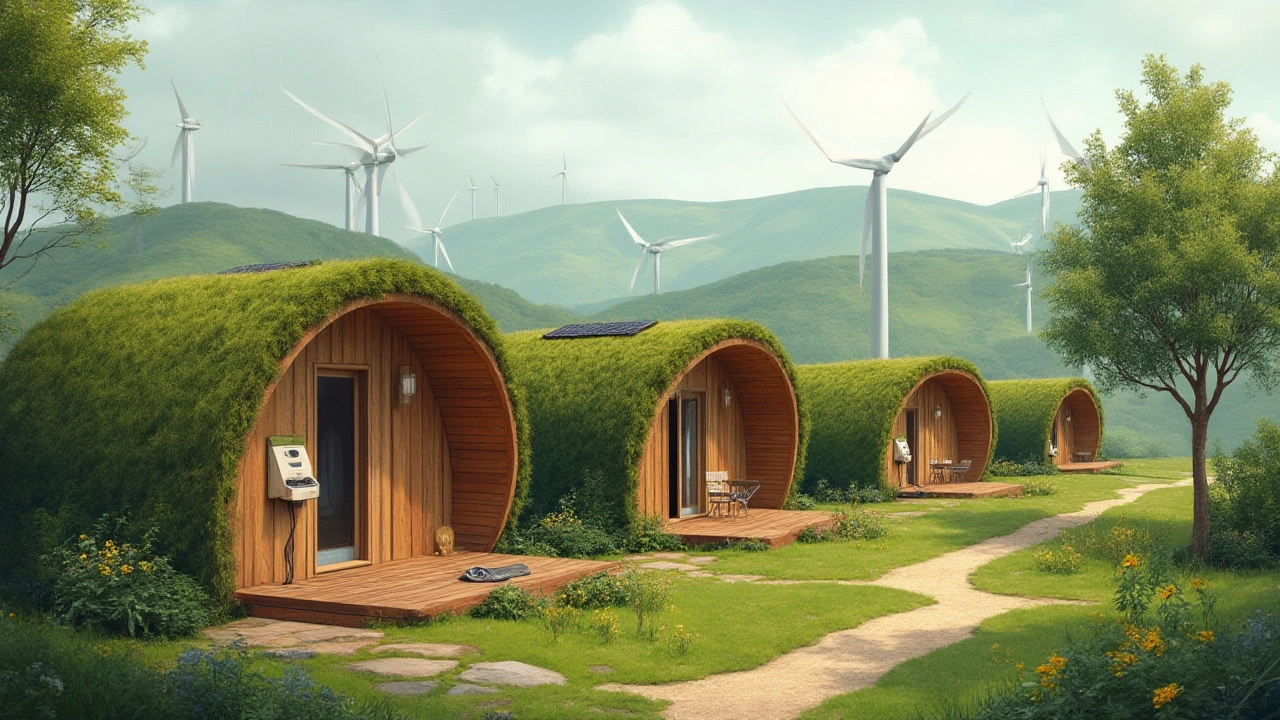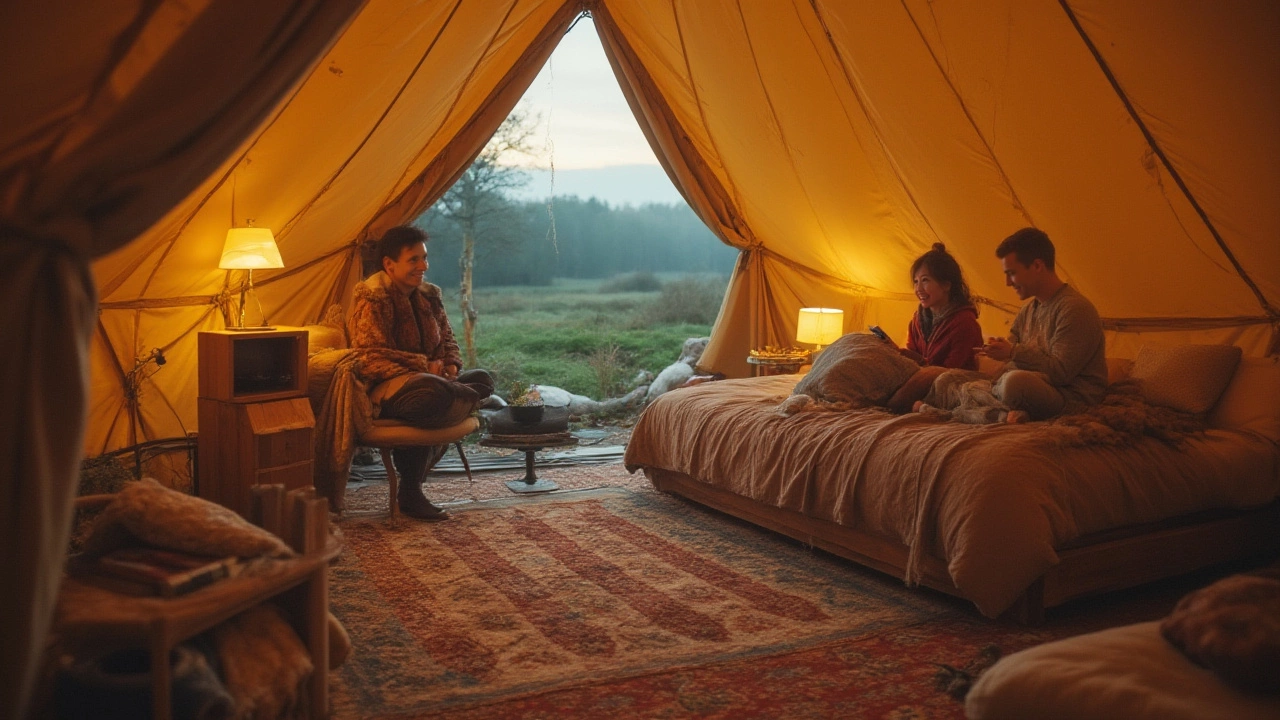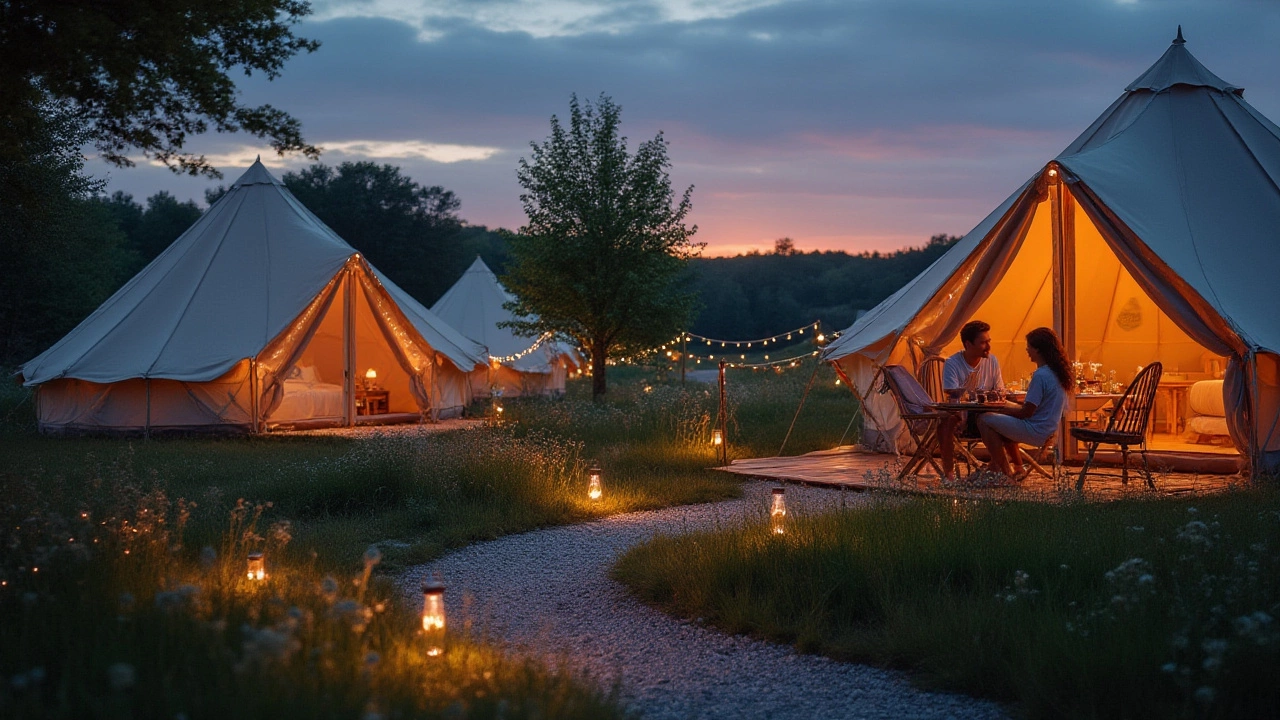Pitching a tent usually comes with bite-your-tongue frustrations—dead phones, flashlights that blink out at midnight, that endless hunt for a power source. But when you swap classic camping for glamping, the rules change in the nicest ways. If you’re wondering whether you can expect electricity when glamping, prepare for some surprises.
Electricity in Glamping: The Real Deal
People romanticize glamping as pure escape—canvas domes, fairy lights, and zero tech. Reality? Most glamping sites offer electricity, and some do it in style. Let’s talk about what this actually means, because the range can be huge. Some places plug you into the grid just like a regular hotel; you get sockets, lighting, and maybe even air conditioning or underfloor heating. Others go minimalist, giving you just enough juice to charge a phone or keep a lamp glowing.
Expecting hairdryers and big-screen TVs? Check the fine print before you arrive. Many upscale sites are upfront about exactly what’s available. You might walk into a safari tent where every lamp, phone charger, and mini-fridge works off hidden wiring. Other places rely on solar panels or portable power packs. According to a 2024 survey by the International Glamping Association, 84% of glamping accommodations in Europe offer mains electricity or solar power to guests.*
Here’s something to keep in mind: electricity access can depend on location and how eco-friendly the site is. Rural, off-grid, or protected landscape spots might limit power on purpose to boost sustainability. That could mean solar lanterns only, or maybe a charging station in the main lodge. Meanwhile, converted cabins and luxury yurts near urban centers often come with all the wires and Wi-Fi you could want.
But what about the comfort factor—will your chargers and gadgets work? Most UK and EU glamping sites use standard electrical outlets (Type G or C/E/F plugs depending on country). In North America and Australia, expect the usual flat-bladed style. Still, always double-check before you pack every device you own. The last thing you want is a dead e-reader and nowhere to plug it in.
- Safari tents and luxury pods: Usually come with full electricity—think bedside lamps, heating, and sockets for laptops.
- Treehouses: Often wired into the mains, but some use discreet solar or battery-powered lighting for eco effect.
- Eco-domes and off-grid cabins: Electricity may be solar-powered and capped at a daily limit.
- Vintage caravans and airstreams: Typically hooked up to mains at established glamping parks.
Reluctant campers, rejoice: You can have your fairy lights and charge your phone too.

How Modern Glamping Sites Power Up
The glamping industry is anything but old-school when it comes to power solutions. Plenty of places invest in clever tech to balance luxury with planet-friendly values. The secret? A mix of mains power, solar energy, battery banks, and open-condensed grids. Some sites run completely on renewables—they hide solar panels on the roof, or tuck wind turbines into the landscape, so the wild vibe stays undisturbed.
The numbers tell the story. According to GlampSiteStats’ 2024 Global Report, about 61% of newly established glamping accommodations use a mix of renewables and grid electricity. Many brag about carbon-neutral stays and list their energy-saving upgrades online. One site in Devon boasts 18 solar panels, a smart battery wall, and low-wattage appliances throughout—so guests don’t have to think twice about boiling a kettle or firing up that Insta-perfect reading lamp.
Another trick? Communal charging points. In places that lean more rustic, you might plug devices into a central hub in the reception tent or kitchen area. That cuts down on wires in the accommodation itself but still gives you reliable access to power when you need it. Portable power packs are becoming wildly popular too, so if you love roaming around the site, it pays to bring a sturdy battery bank along—or rent one on site if it’s offered.
Let’s break down what power options actually look like at glampgrounds around the world with a quick sample:
| Accommodation Type | Main Power Source | Outlet Availability |
|---|---|---|
| Luxury Yurt (UK) | Mains Electricity | Full (bedsides, kitchen, bathroom) |
| Eco-Dome (Spain) | Solar & Battery Backup | Limited (reading light, phone charger) |
| Treehouse (Oregon, USA) | Mains or Generator | Partial (main light, one outlet) |
| Forest Cabin (Sweden) | Off-grid Solar | Limited (USB charge-point only) |
| Safari Tent (South Africa) | Mains or Site Generator | Full (multiple rooms) |
The look and feel will vary, but you almost always get at least some level of electrical access. One fun fact: statistics from GlampGuide Marketplace show that “electricity” is now the second-most filtered amenity after “private bathroom” on their site. So don’t feel bad about prioritizing comfort when picking where to stay.
It’s not just about gadget charging, either. Proper power means heated blankets on chilly nights, chilled wine for sunset, and those crucial, cozy finishing touches—like twinkling LED canopies or a speaker to set the mood. Still craving the wild? You can always choose the strict off-grid style, where the only light is the stars or your own lantern.

Getting the Most From Glamping Power
Let’s get practical for a minute. Want to make sure you’re not caught off-guard when glamping? Here are tips for locking in the right level of tech, luxury, and connection—without losing that magical ‘out in nature’ vibe.
- Read the description, not just the gallery. If having electricity is a must, don’t settle for pretty photos. Look for phrases like "mains power," "solar lighting only," or "USB charging included." Drop the host a quick message if you’re unsure—they’ll know exactly what the setup is.
- Travel with a trusty power bank. Even the best solar or plug-in options can get snapped up in busy season, or maybe you’ll be out for a sunrise hike when your phone dips to 5%. A battery bank with two outlets can save the day.
- Pack multi-use charging cables. If you run Apple, Android, or something quirky, you’ll want to make sure you’ve got the right connectors. And if there’s only one socket, you’ll want to maximize it.
- Bring low-wattage gear. High-draw devices like hair straighteners, full-size kettles, or gaming consoles often trip off-grid sites’ fuses or drain batteries fast. It’s better to bring or use what’s provided.
- If you need to work remotely, ask about Wi-Fi and socket availability in advance. Not every site with electricity has decent internet; some have phone signal boosters or communal routers, others don’t.
- If your stay has eco policies, be respectful about usage. Unplug devices when not in use and switch off bedside lamps before heading out to stargaze. Most eco-focused sites give clear instructions for energy-saving.
There’s also something to be said for planning a digital detox—leave the laptop at home, and limit yourself to charging essentials. That way, you keep some of that classic camping peace but without the risk of getting lost in total darkness. If you’re traveling with friends or family, share chargers when possible to avoid daisy-chained wires across the tent.
Here’s an easy table of what to check before booking—copy it, screenshot it, or just keep it tucked away for next time:
| What to Check | Why It Matters |
|---|---|
| Power source (mains, solar, generator?) | Determines how much you can use at once |
| Outlet number/type | Lets you know how many gadgets you can plug in |
| Lighting details | Plan for reading, ambiance, or night-time needs |
| Device policy/rules | Some sites limit high-powered devices |
And here’s a quirky trend, especially in Europe and Australia: some premium glamping spots now offer “smart” tents with solar USB hubs, portable Wi-Fi routers, and Bluetooth speakers built-in. But don’t let the gadgets fool you—glamping still lets you blend nature with comfort better than anywhere else.
So, yes, you usually have electricity when glamping—sometimes even more than you do at home (just, please, don’t try running a portable disco ball and a waffle iron at the same time). With a little smart planning, you can get all the power you need and still wake up with birdsong, not a buzzing alarm clock.
